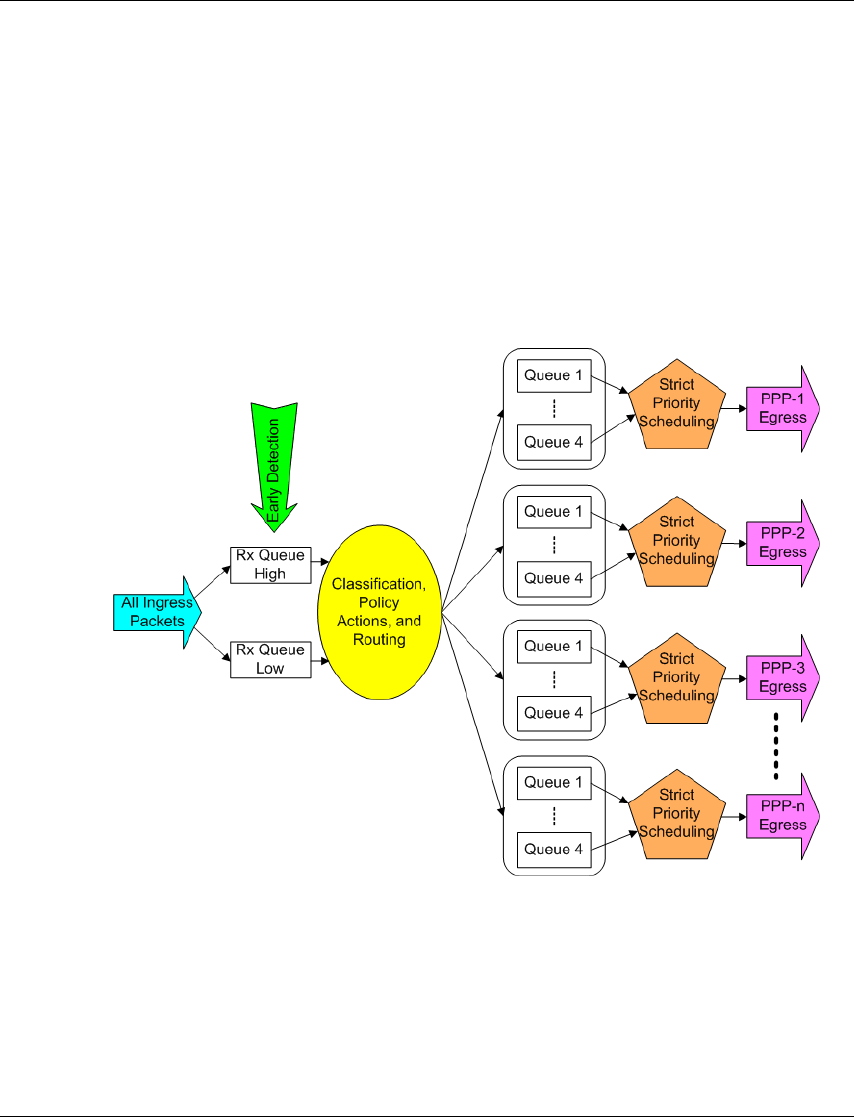
QoS and VoIP Treatment
Avaya X330WAN User’s Guide 55
QoS and VoIP Treatment
X330WAN enforces QoS on the ingress and egress flows. QoS implementation
depends on the X330WAN encapsulation method, described below.
QoS Implementation for PPP Encapsulation
Incoming packets to X330WAN are classified and queued in one of the two
available Rx queues. Separation is performed on packets to be transmitted on a
per-interface basis, with four queues servicing each serial interface. The general
X330WAN QoS concept is shown in Figure 4.8.
Figure 4.8 QoS Queues
As illustrated in Figure 4.8, incoming packets are classified into two queues where
Weighted Random Early Detection (WRED) is implemented on the packets. WRED
serves as a flow control mechanism, enabling the sending TCP peer to adjust its
transmission rate based on the X330WAN average ingress queue congestion.
The usual queuing mechanism begins dropping all packets without previous
warning when the queue becomes completely congested. As opposed to this the
WRED mechanism ensures a gradual increase in the probability of a packet being
dropped based on the queue congestion at any given moment. This gradual increase


















